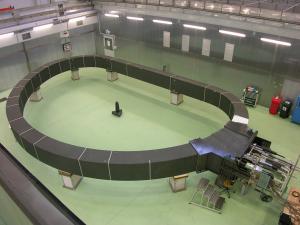Each winding pack, or central core, is formed from seven stacked double pancakes—double layer assemblies of niobium-tin superconductor wound into a D-shape, inserted into mechanical support structures called radial plates, and insulated. The resin impregnation of the full stacked assembly was one of the final steps performed in La Spezia, carried out to electrically insulate the component and create a rigid assembly (photo).
Since the beginning of qualification activities on the European winding line (semi-winding in
2012, full prototype double pancake in
2013), hundreds of people from dozens of companies have contributed: superconducting strand producers in China, Europe and Russia; the ICAS consortium (Italian firms ENEA, Tratos Cavi and Criotec) for jacketed conductor material; CNIM (France) and SIMIC (Italy) for the radial plates; the ASG consortium (ASG Superconductors, Italy; Iberdrola Ingeneria, Spain; and Elytt Energy, Spain) for winding operations; and now SIMIC (Italy) for cold testing and insertion into coil cases.
It's what ITER Director-General Bernard Bigot—who was present at the ceremony on 18 May—calls a good case study of the ITER Project as a whole ... a "melting pot of knowhow and expertise."
"The success of the ITER Project depends fundamentally on successful partnerships between what I would call 'global neighbours,'" said the ITER Director-General to the group that had assembled in La Spezia. "The ITER Project is built on this condition: partnership is a prerequisite, as not a single ITER Member could afford to build ITER alone in a reasonable time. If our large international partnerships perform well, each partner contributes its expertise and unique capacity. We complement each other, we all learn from each other, the interfaces are well-managed, the project succeeds, and everyone wins."
The European Domestic Agency is responsible for the procurement of nine toroidal field coils plus one spare; the Japanese Domestic Agency, which is responsible for nine others, also
recently produced its first winding pack. The first 17-metre tall, 310-tonne completed toroidal field coil (winding pack plus steel case) will be shipped to the ITER site in 2018.
See the story on the Fusion for Energy website
here.


